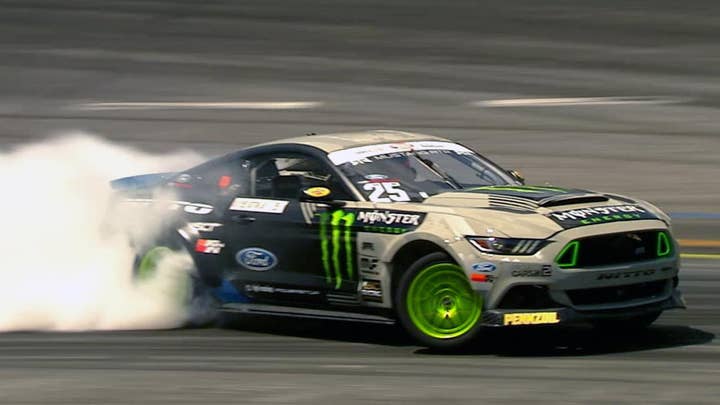
(Indycar)
The IndyCar Series is going retro.
On a day series leaders released the first images of a new generation of cars, they also explained how drivers and fans helped create the new look by bringing back some designs from past decades. The result: a sleeker design, higher-performance technology, fewer body parts and presumably safer cars.
"Hopefully we've hit a home run on the aesthetic part. We've hit a home run hopefully on the performance part of the car," IndyCar president of competition and operations Jay Frye said Monday. "The safety part of the car is well-advanced. The driver's side-impact piece that's in this car is moved forward. The radiators are moved forward, so it's also a much more robust protection piece for the side impact for the drivers."

(Chris Owens 2017)
Changes include smaller, lower wings, weight shifted to the front of the car, more downforce from underneath the car and reduced costs for teams because the kits will be used from 2018-20.
The cars will be seen publicly and tested for the first time Tuesday on Indianapolis Motor Speedway's 2.5-mile oval. A second testing session is scheduled for Wednesday. Two-time Indianapolis 500 champion Juan Pablo Montoya and Spain's Oriol Servia will drive this week.
Series officials also will hold tests Aug. 1 at Iowa, Aug. 10 at Mid-Ohio and Sept. 26 at Sebring.

(2017 Chris Owens)
But there might be almost as much interest in subtle alterations.
The engines will be more visible to fans wandering through Gasoline Alley.
Fewer body pieces should reduce debris on and around tracks following crashes.

Series officials believe the newly-designed side-impact protection will prevent injuries like the life-threatening one Canada's James Hinchcliffe sustained when a broken suspension pierced his leg in Indy in 2015.
And engineers are still working on a wind screen that could help protect drivers.

"The cars have been built and designed around having some sort of application like that, so at some point between now and the end of the year we'll test something," Frye said, referring to the wind screen. "When we get it on, we want to make sure we've got it right, and we want to make sure it's ready to go. At that point, then we'll decide is it an '18, '19, or are we going to use it in the future."
Manufacturers also will be able to conduct tests before teams receive the kits — one for superspeedway ovals, the other for all other race courses — in November.
Teams are scheduled to begin testing in January.
The new kits also could have another effect: generating interest from another engine manufacturer to compete with Honda and Chevrolet.
"I'm not sure if we're close. I would say we're closer," Frye said. "There were some hurdles that we had, and hopefully we've removed the hurdles, so there seems to be more enthusiasm about the direction, and they see our five-year plan, they see where we're going. That doesn't mean they're coming. It's just, maybe, there's now an opportunity that they could come."
VAUGHN GITTIN JR. GIVES FOXNEWS.COM THE DRIFT:
